West African Roots: A Closer Look at the Origins of the Fiddle Leaf Fig
Photo by Genevieve Garuppo. Originally printed in AphroChic magazine Issue 10, Fall/Winter 2022.
For most of us, it was around 2010 that today’s trendiest houseplant came onto the scene. The ficus lyrata, better known as the fiddle leaf fig started a revolution, quickly replacing the old, outdated palm tree of virtually every home and office of the 1990s. While the fiddle leaf fig has enjoyed soaring popularity over the past decade — even getting recognized by The New York Times as the go-to plant of top interior designers — its history is much longer and deeper than that. In fact, this stylishly modern plant is millions of years old and traces its roots to West Africa, specifically modern day Cameroon and Sierra Leone.
Philadelphia home designed by Naomi Stein. Photo by Seth Caplan
Despite sounding somewhat bizarre, the plant’s Latin title actually makes some good sense. Native to lowland tropical rainforests, where they commonly reach heights of 50 feet, this lush tropical ficus boasts large leathery leaves that resemble a lyre, or lap harp, hence the name ficus lyrata. In English we call it a fig tree because, in its homeland, this large flowering plant produces green fig fruit. While it stands alone as an ornamental statement plant in today’s interiors, in the wild, the fiddle leaf fig is known as a fierce competitor, growing to its gargantuan height by attaching itself to lower level trees and taking their share of sunlight. In domestic settings however, it has no such competition — which is probably good for the rest of the houseplants.
Known for being finicky and hard to care for, its high maintenance reputation, while adding to its luxury status, may actually be a bit unfair. Far from being temperamental, it’s more that this plant is out of its element in most homes. The fiddle leaf fig needs a bright spot to grow in and lots of humidity to keep it happy. While that doesn’t sound like too much to ask, most of our homes don’t offer the type of rain forest environment the plant requires. And most of us don’t want them to. At the same time, if you can keep the fiddle leaf fig healthy and thriving, it can grow pretty wild, so pruning may be necessary from time to time.
Interior design is all about trends, and whether we’re talking about furniture or plants, every era has its favorite styles. In the 1950s and '60s the African violet was the flora of choice, the 1970s had the spider plant, and the '80s and '90s, the ficus. In contemporary spaces, however, it’s the imposing size and sculptural quality of the fiddle leaf fig that makes it a stand out in any room. Older than humanity itself, the jurassic nature of the tree is likely the reason for its stunning leaves that can measure up to twelve inches in length. Lending to the sculpted feeling of the plant, it can’t help but grab attention from any corner in the room. Likewise, the feminine aesthetic of its curving leaves fits in beautifully with modern decor while freshening up more traditional spaces.
Hudson home designed by AphroChic. Photo by Nicole Franzen
For those wanting to liven up their spaces with culture, artifacts and plant life, the fiddle leaf fig can be a perfect way to bring a piece of the African Diaspora into daily decor. We love utilizing this tree in rooms with handcrafted rugs from the African continent, hand carved sculptures and other artisan objects by makers of the Diaspora.
While the fiddle leaf fig tree has West African roots, today its popular- ity has led to it being grown in the US for decorative purposes. While we did try to research African growers, sadly we weren’t able to identify any. But, a fiddle leaf fig is a wonderful way to bring African roots home. Here are a few of our favorite sources for fiddle leaf fig trees:
Here are a few of our favorite sources for fiddle leaf fig trees:
Bloomscape
Fiddle leaf fig trees up to 5 feet
tall can be found at Bloomscape. You can order your plant online and expect it in just a few days in a colorful pot of your choice. Your fiddle leaf fig will come with care instructions, and will be replaced for free if it dies within the first 30 days.
Pottery Barn
For those who don’t want to have to deal with the care and upkeep of a real plant, there are plenty of beautiful faux options for fiddle leaf figs. Pottery Barn has sculptural faux fiddle leaf fig trees that are up to 7 feet tall. Their faux trees are sure to add drama and interest to an empty corner in any room.
World Market
World’s Market’s 6-foot faux fiddle leaf fig is regarded as one of the most lifelike faux options you can find. We’ve used it ourselves in a project and admired how lifelike it is. With a lush canopy of leaves at the top, it’s a beautiful statement piece that can be dressed up even further in a stylish basket.
Costa Farms
One of the largest growers of plants worldwide, Costa Farms sells a variety of fiddle leaf fig trees. After buying the plant from Costa Farms you can visit their website that provides information on how to keep your fiddle leaf fig happy and healthy and learn how this stunning plant also contributes to better indoor air quality as well.











